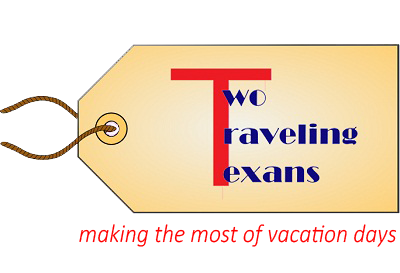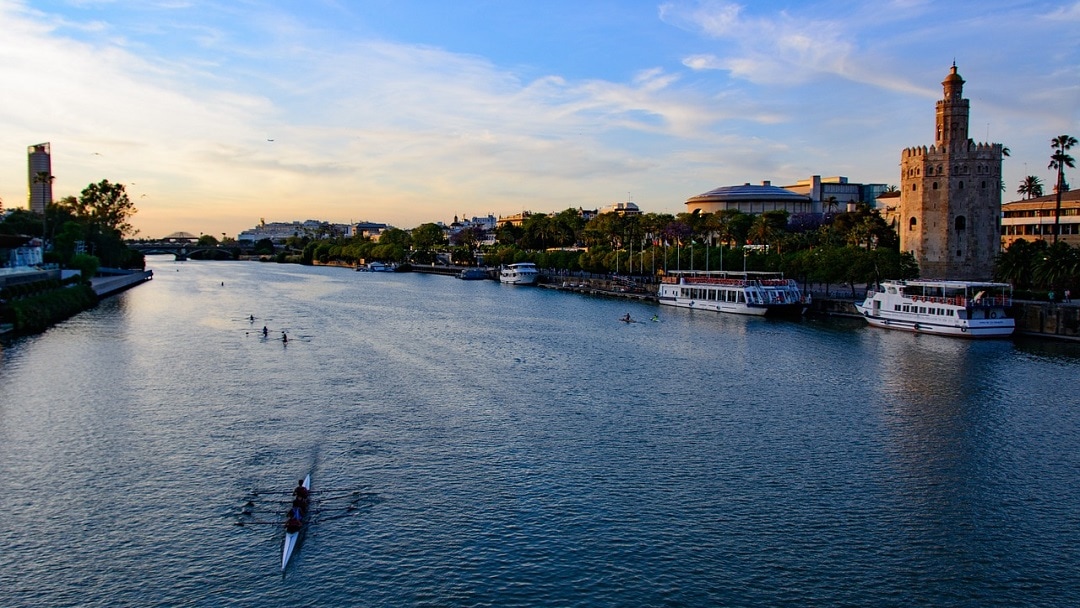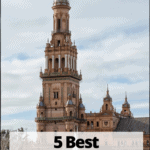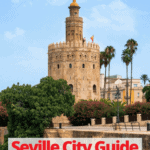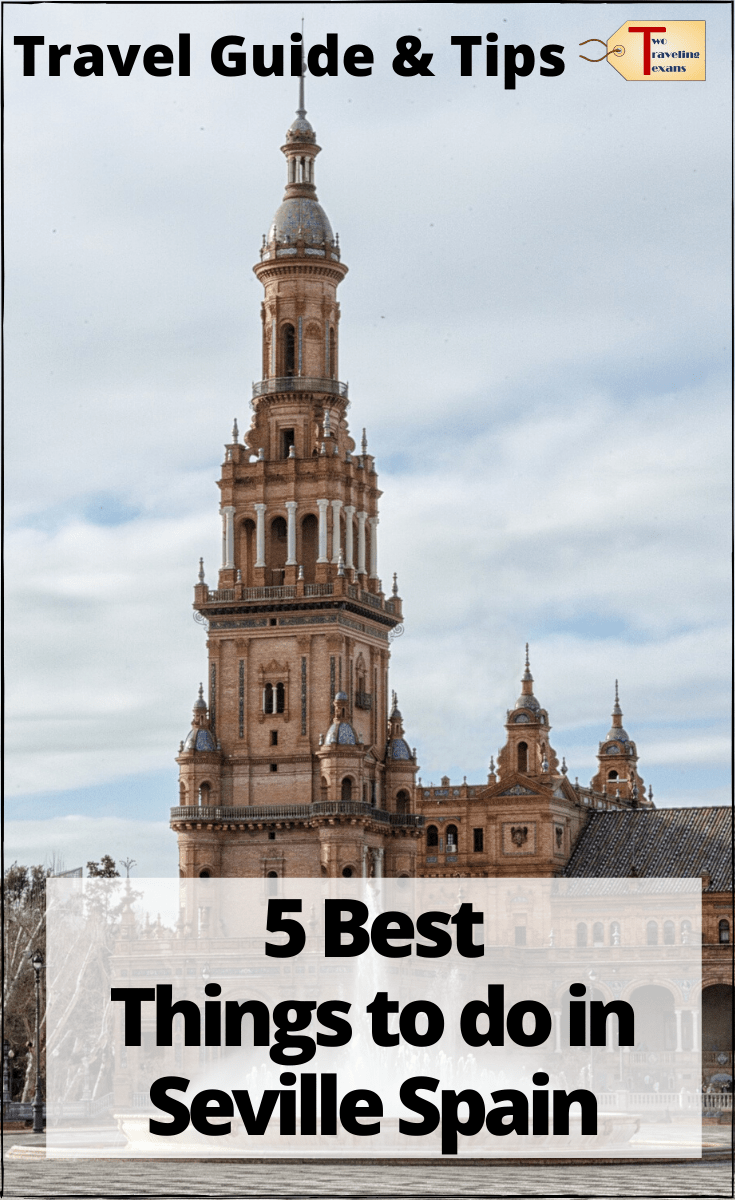The birthplace of Flamenco, the sunny city of Seville set in the Andalusia region, has been a popular spot for many tourists flocking to Spain.
It is fairly easy to understand why so many who visit fall in love with gorgeous Sevilla. Here, you get to experience one of the most incredible Easter festivals and processions in all of Spain, savor and enjoy the local cuisine as well as admire the city’s stunning architecture that melds both old-worldly Moorish designs alongside newer modern building styles like Metropol Parasol.
In this guide, I’ve decided to outline all the info you may need to prepare for your trip to Seville, including what to do, how to get there, how to get around, and more!
Note: This post contains affiliate links. Please see disclosure for more information.
Contents
Top 5 Things To Do In Seville
With all that Seville has to offer, you’re probably wondering what are the best things to do in Seville, Spain during your trip. It’s a good idea to start with a free walking tour to get an overview of the city. Here is a selection of my top five favorite attractions you don’t want to miss.
1. The Royal Alcázar of Seville
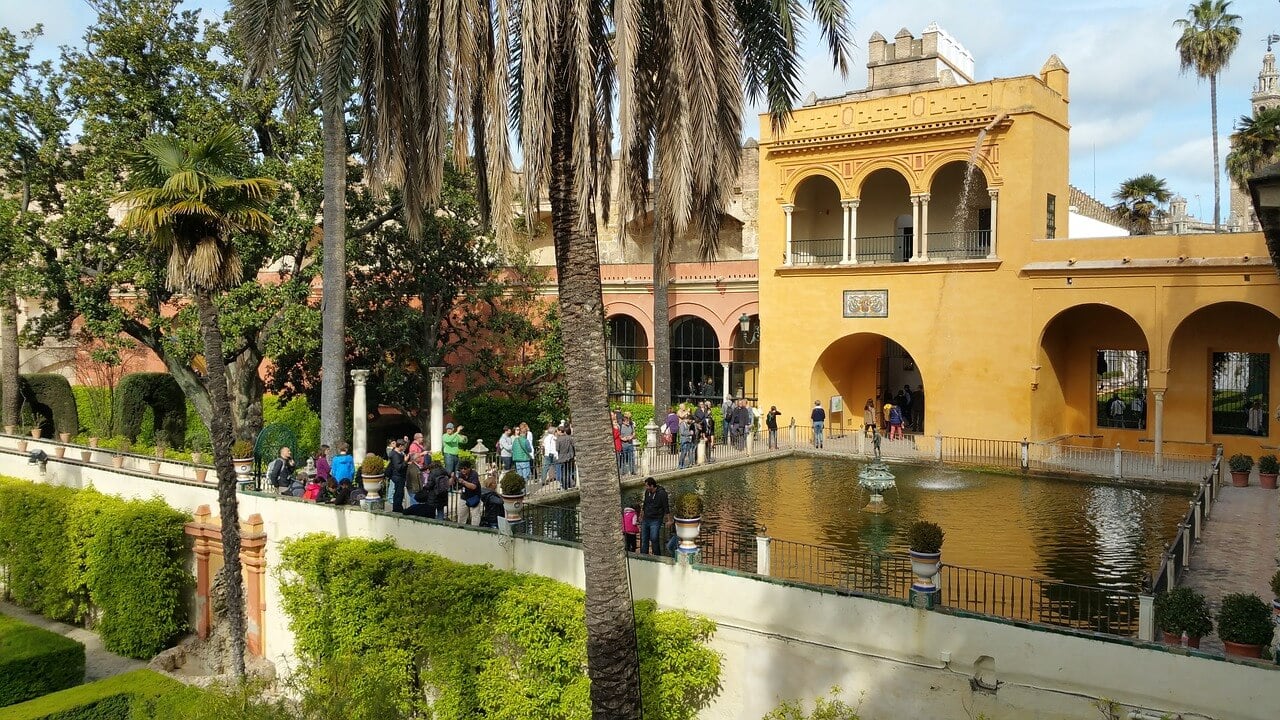
The Royal Alcázar of Seville is a royal Moorish palace rich with history. It has a timeline dating back 11 centuries and was constructed in several architectural styles.
The opulent palace rooms showcase different period styles, with highly detailed tile decoration and amazing woodwork. The beautiful gardens are surrounded by tile and stone walls. They’re filled with a variety of flowers and fruit trees.
Certain parts of the palace are still used by the royal family of Spain when they visit Seville.
Given the beauty and history of the palace, most travelers put visiting it at the top of their Seville travel guide. A limited number of guests are allowed to enter the palace each hour. To avoid standing in a long queue, it’s highly recommended that you book your Alcazar Seville tickets in advance.
2. Catedral de Sevilla
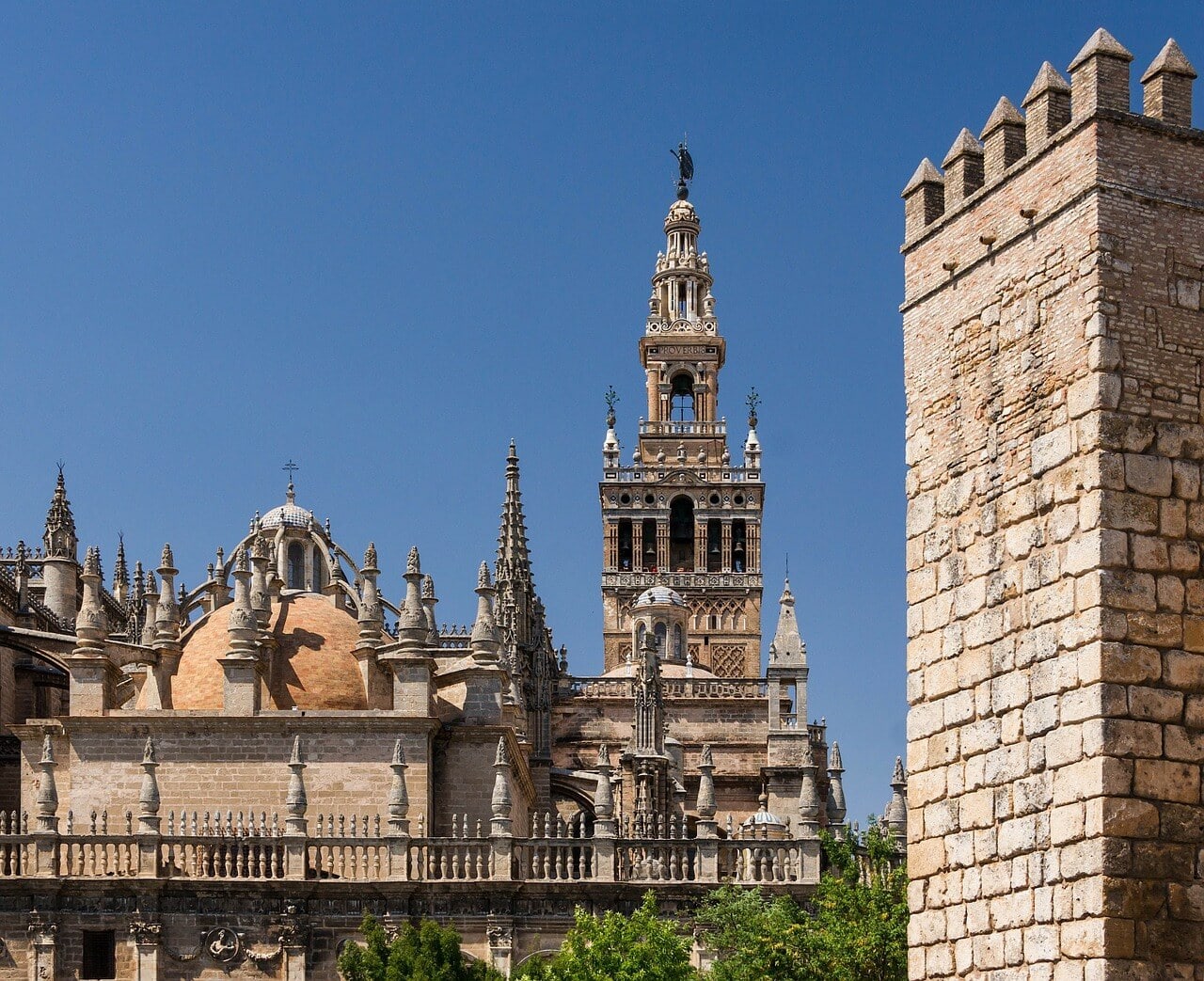
The 16th-century Seville Cathedral is a gem of Seville. It’s the third-largest church in the world and the largest Gothic cathedral in Europe. The scale and grandeur of the building are truly spectacular.
Inside, there is an extensive collection of art, architecture, paintings, religious relics, and beautiful tombs. The most famous tomb is that of the Italian explorer, Christopher Columbus. His final resting place is outlined by four elaborate figures, each representing a conquered kingdom.
The colossal Gothic altarpiece is said to be the largest in the world. It features 45 religious scenes that contain over 1,000 wood figures adorned in dazzling gold.
The Giralda Bell Tower is attached to the cathedral. You can climb to the top for stunning panoramic views across the city.
Since this is yet another of the main attractions in Seville, don’t forget to grab your Seville cathedral tickets ahead of time.
3. Plaza de España
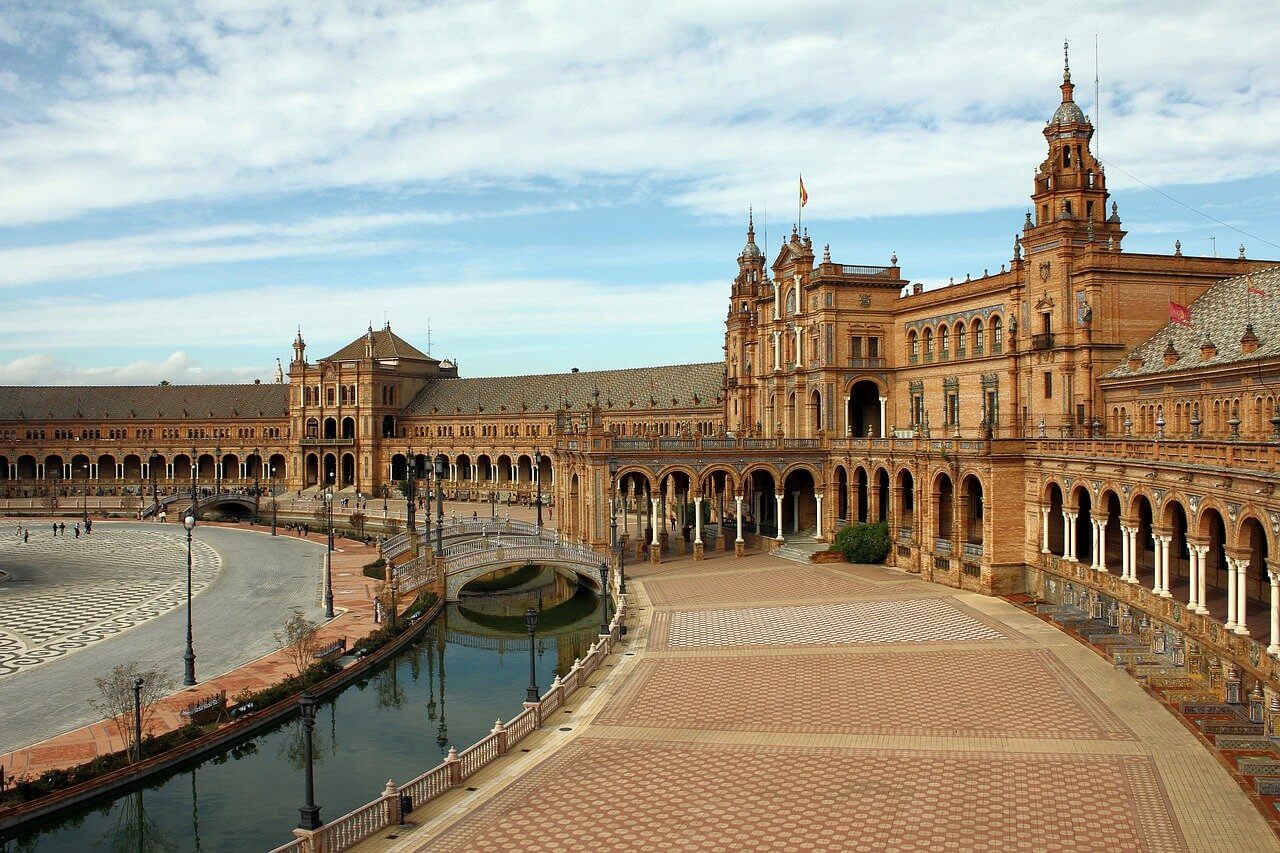
The Plaza de España is a large public square inside the beautiful María Luisa Park. It was built for the 1929 Ibero-American Exposition.
The plaza is shaped in a large semi-circle. The style of architecture is a combination of Renaissance Revival and Moorish Revival. The large imposing building is surrounded by a moat, with four bridges. Each bridge represents the ancient Spanish kingdoms: Castile, Navarre, Aragón, and León.
The picturesque plaza and park have a great atmosphere and provide plenty of leisure activities. Take a romantic carriage ride through the park, relax on a boat trip along the moat – or simply sit and people-watch.
Flamenco dancers and other artists are known to put on free performances in the plaza. And seeing as this is a public square, entrance is free.
4. Santa Cruz District
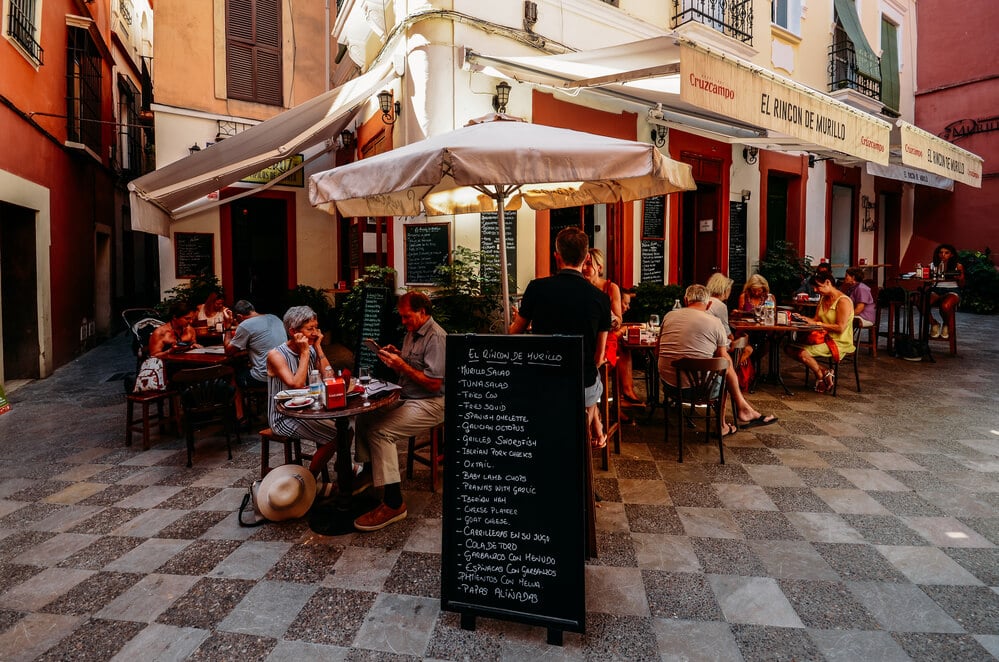
The Santa Cruz District is the city’s former Jewish Quarter. Today, it’s Seville’s tourist hub. This is where you’ll find some of the city’s top attractions, including the Royal Alcázar of Seville and the Seville Cathedral.
It’s also a great place to catch a flamenco performance. The Museum of Flamenco Dance offers daily shows as well as an opportunity to learn about Seville’s flamenco culture. It’s one of the best museums in Spain!
In between hitting the main attractions, you should wander the barrio labyrinth of narrow alleyways and secret squares. Many popular Seville bars, including tapas bars, are found here, from old-school joints to chic eateries.
5. Torre del Oro
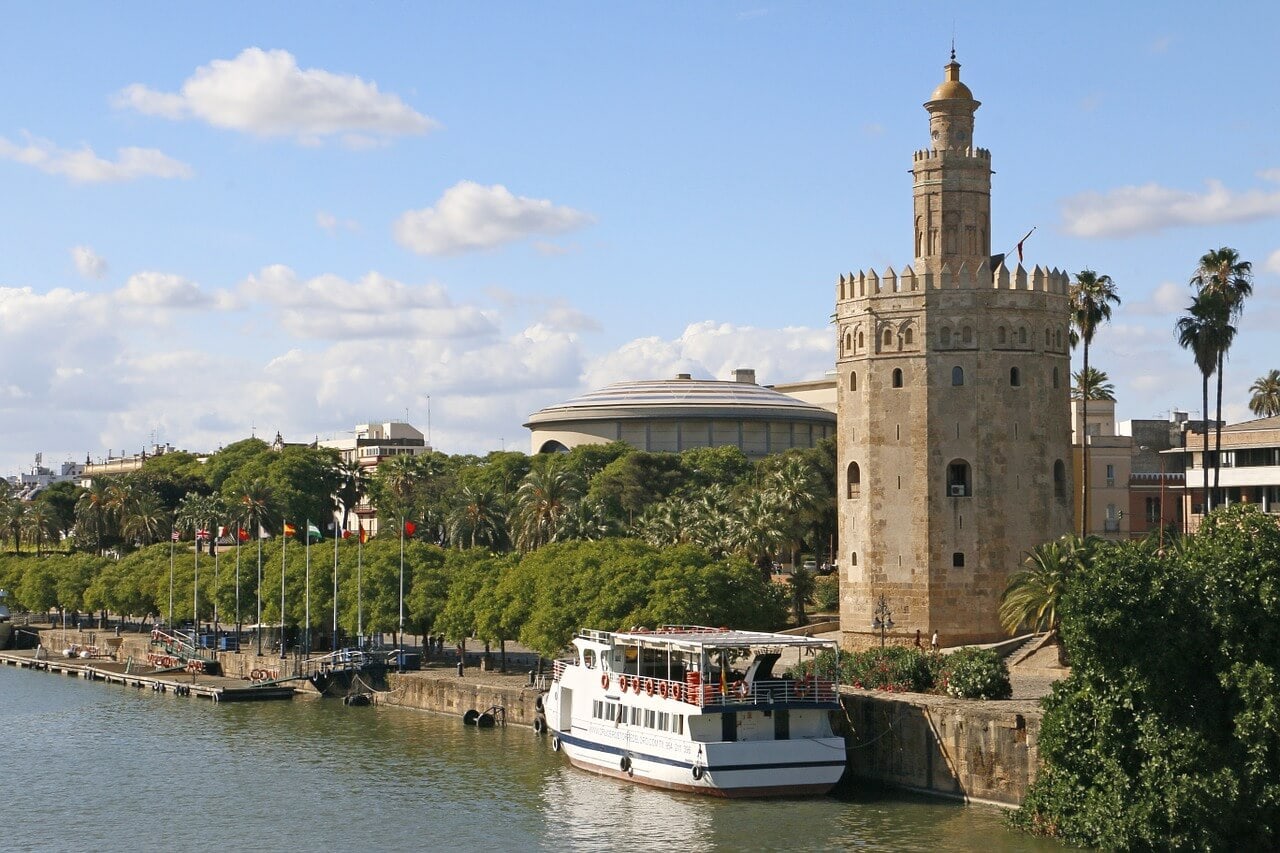
The Torre del Oro, also called the Tower of the Gold, is a 13th-century watchtower perched on the Guadalquivir River. During the Middle Ages, the tower served as a prison. It was also used as a place for storing gold.
Today, it houses a small museum on Seville’s naval history. Inside there are models, paintings, compasses, and ancient artifacts.
There are three sections of the tower. The bottom section is 12-sided and gives the structure it’s a unique shape. It was built in stone and originally decorated with golden tiles. This is said to be where the tower’s name originates from.
You can climb to the top for excellent views over the city and the Guadalquivir River. The entrance fee is €3 and includes access to the museum.
When To Visit Seville
Seville has a Mediterranean climate, with wet winters and dry summers. The best time to visit Sevilla depends on the weather you’re comfortable with.
Seville summers (May – July) produce some of the hottest temperatures in Europe. With averages reaching 32°C – 40°C, make sure you’re prepared for your trip by searching for Seville hotels with air conditioning.
From late autumn and throughout winter, it’s much milder. From November to February the temperatures dip down to a nice 18°C – 20°C. This makes outdoor exploration very pleasant. Rainfall does occur during this time, but it’s generally not too heavy and is accompanied by nice temperatures.
March to May are the best months to visit Seville. The temperatures are comfortable, and the rush of summer tourists are yet to arrive.
The exception of this is the week in April leading up to Easter. Known as Semana Santa de Sevilla, this is one of Spain’s best Easter celebrations. More than one million visitors travel to the city to partake in the local festivities.
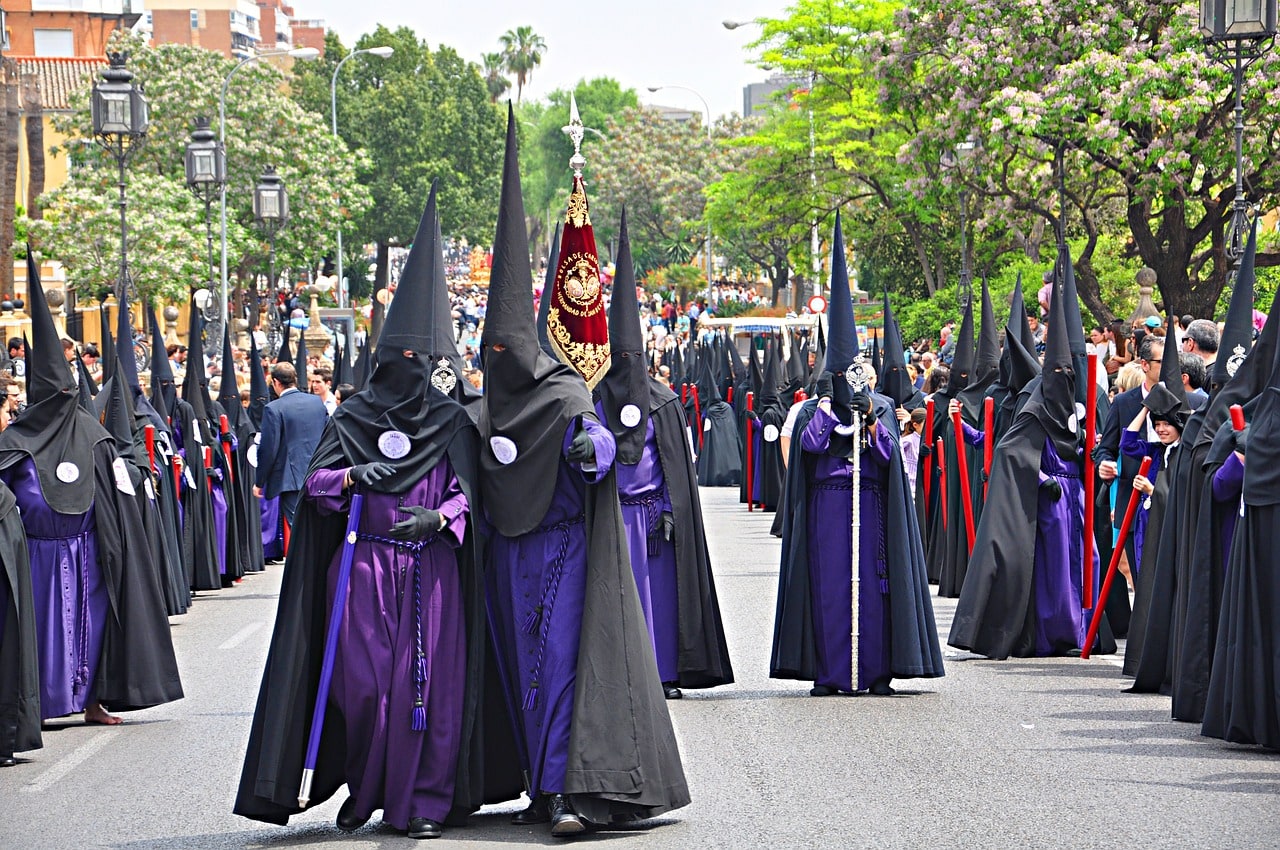
How To Get To Seville
Seville is well-connected with the rest of Spain as well as many other European countries. You’ll have a few options to choose from for arriving in the city, depending of course, where you are traveling from.
Plane
If you’re arriving in the city by plane, you’ll land at Seville Airport. There are flights from the bigger Spanish cities, like Madrid, Barcelona, and Valencia. You can also fly directly from other European cities, such as London, Paris, and Rome.
Once you land, you can reach the center of the city in 15 minutes by taxi, or about 35 minutes by bus, the Line EA bus service at a cost of €4 one-way.
Train
Seville is serviced by the Spanish high-speed train network (AVE). The main train station is Santa Justa. Routes are offered between Seville to Cordoba, Madrid, Barcelona, Granada, Valencia, Malaga and other main cities. There are also regional and long-distance train services that connect Seville with numerous towns and villages.
Bus
Seville has two bus and coach stations. The main one is located on Plaza de Armas and offers daily national and international services, whilst the Prado de San Sebastián bus station offers mainly regional services.
Where to Stay in Seville
If you want to make the most of your time in Seville, stay in the Santa Cruz neighborhood. It is conveniently located so that you can walk to most attractions. If you are on a tight budget consider options further out.
Seville Travel Guide: Getting Around
Considering this Spanish city is fairly small and compact, 36 hours in Seville is all you need to hit the highlights. To make your trip run as smoothly as possible, here are the best options for getting around.
Walking
Seville’s old town is very walkable, meaning you won’t have to waste too much of your time on public transportation. The main attractions in the city are all within a 20-minute walk from the center.
Bike
The city-wide bike-rental service, Sevici, is a fun option for seeing the city on wheels. With bike stations all over the city operating 24/7, this mode of transport is very accessible and certainly a unique way of getting around.
Bus
Seville’s bus network covers all of the barrios (neighborhoods) in the city. A one-way ticket is between €1.60 and €1.80, or €5 for an unlimited day pass. The buses run Sunday – Thursday from about 06:00 – 23:00. On Friday and Saturday, the night buses run until 02:30 in the morning.
Tram
The trams make just four stops from the city center. A one-way ticket is €1.30. If you’re visiting Seville for a longer period, the Tarjeta Multiviaje is a rechargeable card that you can use for the buses and trams. The tram runs every day from 6:00 to 01:30 in the morning.
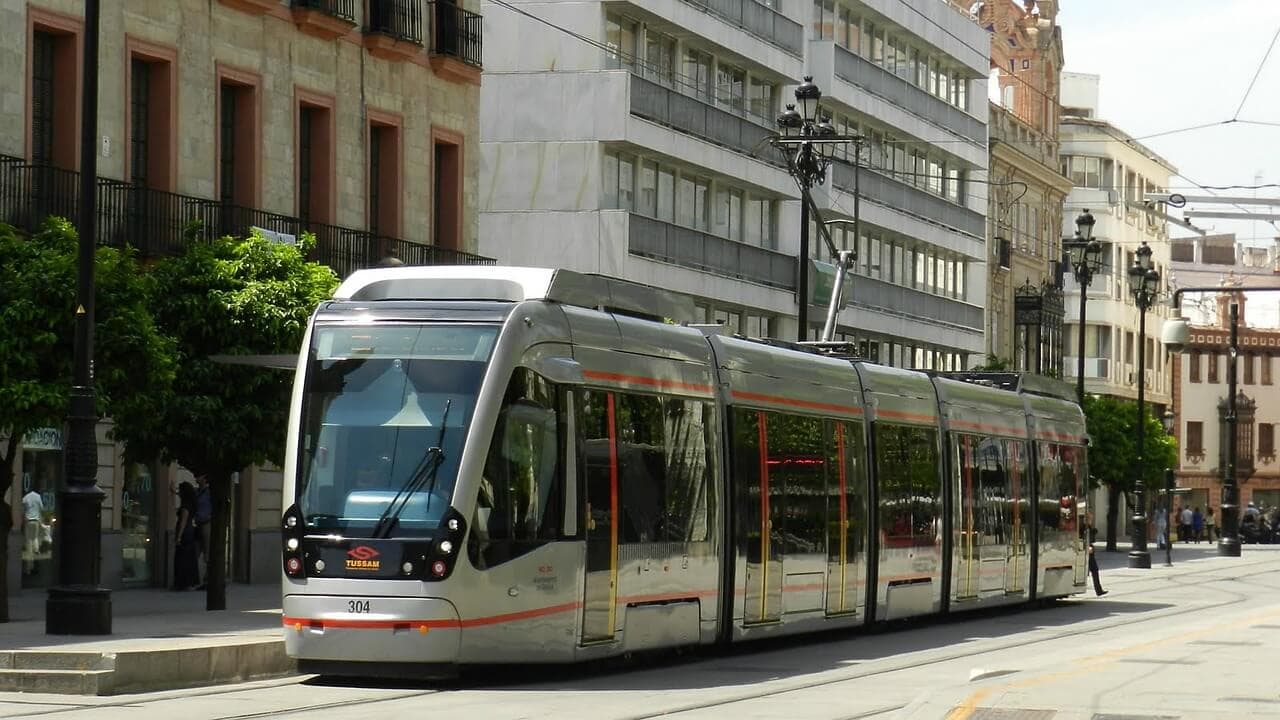
Is Visiting Seville Worth it?
Yes! Seville has plenty of things to do, an interesting history, diverse architecture, and delicious food. It’s less expensive than other Spanish cities like Barcelona or Madrid. The only downside is that the heat can be oppressive in the height of the summer.
Have you been to Seville? I would love to hear about your experience in the comments.
-Marco
Pin for Later
Expert Tips for Visiting Seville
- Considering that most attractions are located quite centrally and can be explored on foot, you may be clocking up the miles whilst sightseeing. Be sure to bring along comfortable walking shoes.
- Many of Seville’s attractions do offer free entrance during specific days or times of the week. Make sure to check beforehand as you may be able to take advantage of these concessions during your visit.
- It’s definitely a smart idea to pre-book your entrance tickets, especially when heading to the Royal Alcázar or the Cathedral. The last thing you’d want is to be wasting time by waiting in lines instead of exploring beautiful Seville.
- Be prepared to eat late. For lunch, restaurants usually open between 12:30 – 1:30 pm until approximately 4:00 pm. For dinner, it’s not unusual to find restaurants only opening up around 8:30 pm or even slightly later, and even then they will be fairly empty until locals start arriving after 10:00 pm!
Disclosure: This post contains affiliate links. This means we will receive a small commission for some purchases made using links in our blog with no additional cost to you. Please be assured we would not promote any product unless we believe that our readers will also benefit. The commission does not influence the editorial content of this site.
Two Traveling Texans is a participant in the Amazon Services LLC Associates Program, an affiliate advertising program designed to provide a means for sites to earn advertising fees by advertising and linking to amazon.com, amazon.co.uk, amazon.ca. Amazon and the Amazon logo are trademarks of Amazon.com, Inc. or its affiliates.
Last Updated on May 3, 2023
